Next-Generation Sequencing (NGS) is a robust platform capable of simultaneously sequencing millions of DNA molecules. Unlike Sanger sequencing, which took more than a decade to decipher the human genome, NGS techniques provide the ability to sequence an entire genome in the space of just a few days. This transformative tool is revolutionizing clinical and research fields alike from genetic diseases, oncology, clinical diagnostics to personalized medicine - offering a high-throughput solution that can sequence multiple individuals in parallel. Here we will discuss the development and current state of sequencing technologies, and where the future of NGS may take us.
The founding method in DNA sequencing, or “first-generation” technology is known as Sanger sequencing. Developed in the 1970’s, the Sanger method is a Sequencing by Synthesis (SBS) approach in which a nucleic acid sequence is determined as a function of DNA strand length1. SBS harnesses the natural sequencing process that occurs during mitosis, in which double-stranded DNA is split and each strand copied.
The Sanger sequencing method was truly groundbreaking, and led to the success of the Human Genome Project. Over the years, the Sanger method was refined with improved chain termination methods, automation and gel electrophoresis was replaced with multichannel capillaries. While these improved the speed and accuracy of Sanger sequencing, there remained some unavoidable limitations. Sanger sequencing is only appropriate for shorter sequences, since distinguishing a mass of a sequence of a length L and that of a length L+1 becomes near-impossible with sequences over 1000bp, and despite refinement and automation, the mass measuring process remains costly, while throughput levels remain low compared to modern sequencing approaches.
Notwithstanding its limitations, Sanger sequencing is still useful for applications where high-throughput is not necessary, or where few gene targets are required, e.g. for verifying PCR products or plasmid constructs.
The demand for a high-throughput sequencing solution prompted the development of a number of improved, “next generation” technologies. Although the term “next generation sequencing” was coined, it can be somewhat unclear. To eliminate ambiguity, applying the nomenclature “second-generation”, “third-generation” etc. is often more helpful.
Second-generation (second-gen) technologies fit into two broad categories of hybridization-based (HBS) or SBS approaches. These second gen technologies ushered in a shift towards short-read sequencing of smaller DNA fragments (300-500 bps). Illumina became the most popular technology for short-read SBS, a method which massively parallelises the SBS process by running multiple synthesis experiments simultaneously.
In the Illumina method, input DNA fragments with ligated adapters undergo repeated bridge amplification while attached to a glass slide containing oligonucleotides complimentary to the adapters. After repeated steps of hybridization-based enrichment, millions to billions of DNA clusters are formed on the slide, ready for sequencing2.
Only fluorescent-labelled ddNTPs are used in Illumina sequencing, so each sequenced strand is the same length at the end of a cycle. This means that the same ddNTP gets added to every strand, emitting a ubiquitous fluorescent light that corresponds to the DNA base, which is then analysed by base caller software. Chain termination is overcome through the introduction of an enzyme which converts ddNTPs into a regular dNTP, allowing base-pairing to continue.
This high-throughput, high-accuracy and low-cost method has proven to be a powerful tool for targeted sequencing – analyzing short, targeted genome regions in one or multiple genes associated with specific phenotypes. This makes short-read SBS useful for in vitro research and diagnostics alike.
The highly diverse library preparation options make second-gen SBS ideal for research purposes, accelerating research into rare diseases, oncology and reproductive health. At OGT, we have designed our SureSeq™ NGS panels in collaboration with leading cancer experts to detect key variations implicated in a broad range of hematological and solid tumor cancers. Since these disorders have marked genetic heterogeneity, and a rapidly growing list of genes implicated, short-read NGS and Illumina sequencing is highly suitable in this field.
Sequence with confidence with our SureSeq NGS panels
The nature of short-read sequencing provides difficulty in detecting some genetic aberrations, as it hard to resolve repetitive genome regions. As a result, second-gen sequencing methods can’t always detect some variants such as repeat expansion disorders or structural variants within repetitive regions. To overcome this, the third generation of NGS technologies were developed with a goal to sequence long DNA molecules at high-throughput.
One of the first to be developed is a technique known as single-molecule real-time sequencing (SMRT). This technique enables very long fragments (up to 30-50kb) to be sequenced. Here, DNA to be sequenced is bound to the bottom of a well called a zero-mode waveguide (ZMW). This ZMW guides light towards the DNA and bound polymerase, where fluorophore-labelled nucleotides are added to the sequence and images taken at the millisecond time-scale. Because imaging is timed with the rate of nucleotide addition, the DNA can be sequenced in real time. This whole process can occur in up to one million ZMWs in parallel on a single chip3.
The chief advantage SMRT is the longer read length giving greater resolution of repetitive regions and structural variants. The long-read nature of this method also makes it appropriate for whole genome sequencing (WGS). Compared with second-gen short-read technologies however, SMRT does have a higher rate of error, a greater cost-per-base and a lower throughput.
A third-gen technology which goes about sequencing through a completely novel approach is nanopore sequencing. A hand-held sequencer with a grid of biological nanopores embedded into a membrane separates two ionic solutions and allows an electrical current to flow through the nanopores. Single-stranded DNA can be pushed through the nanopore one base at a time, with each DNA base inducing a unique change in the electrical current running through the nanopore that are translated with base-calling software4. Nanopore sequencing does have a high error rate however, due to systematic errors, including a lack of control in the speed of DNA molecules as they travel through the pore.
Looking to the future, technological advancements will usher in faster and more accurate sequencing methods. Future sequencing platforms will require less input DNA and reagents (zeptoliters down to a few molecules), and become more portable for diagnostic use in medical, agricultural, ecological and other field-based settings5. Advances in bioinformatics, robotics, liquid handling and nucleic acid preparation will all help to facilitate this.
For most day-to-day applications however, many researchers still prefer the high-throughput, high-accuracy and reliability of well-established short-read SBS techniques such as those offered by Illumina. The low cost per base and diversity of library preparation configurations makes short-read sequencing advantageous for a wide range of clinical and research applications.
We have come a long way in 40 years of DNA sequencing, and the exponential rate of NGS advancements looks set to continue. Now that NGS is becoming ever-more accessible and affordable, this exciting technology is revolutionizing numerous life science disciplines across the globe. The increased portability of NGS technology posits NGS as a useful field-based tool, and could be a major transformation in the years to come.
Get set for success with our SureSeq NGS products or contact us to discuss your project.
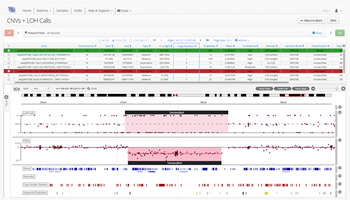
As one of the first steps in many NGS data analysis pipelines, accurate variant calling is often critical to downstream analysis and interpretation. Here, we take a look at variant calling best practice through a modern lens.
Read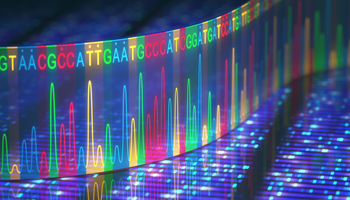
A high-quality sequencing library is the linchpin to generating good sequencing data. We discuss our six top tips to help you improve your sequencing library.
Read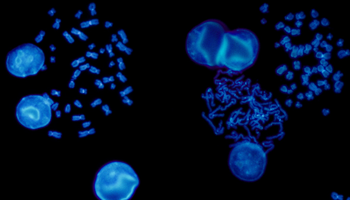
FISH is a cytogenetic technique utilized in labs to detect chromosomal abnormalities in both cancer and constitutional specimens. In this blog learn about the advantages of FISH...
Read
This blog will discuss FLT3’s normal function, its implications in myeloid malignancies, and the role of NGS in genetic identification and disease management of patients with FLT3 genetic alterations.
Read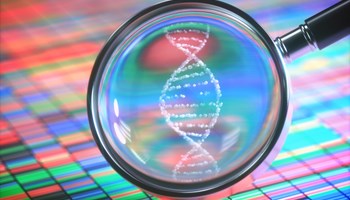
While liquid biopsy may present an attractive alternative to a solid biopsy, it also has limitations. Here, we shed light on some advantages, limitations, and future outlook for liquid biopsy in oncology clinical practice.
Read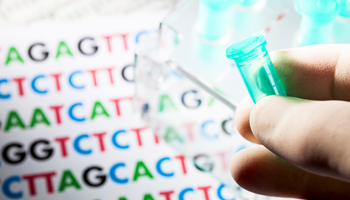
Find out about the benefits and differentiating factors of the three most commonly used NGS technologies; targeted gene panels, whole-exome sequencing (WES) and whole-genome sequencing (WGS).
Read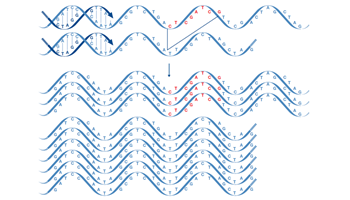
Next generation sequencing (NGS) is now in routine use for a broad range of research and clinical applications. Facilitating the detection of a wide variety of mutations, focus has never been higher on the value of making the correct choice for the initial sequence enrichment step, which, if poorly designed, can be a source of bias and error in the downstream sequencing assay.
Read